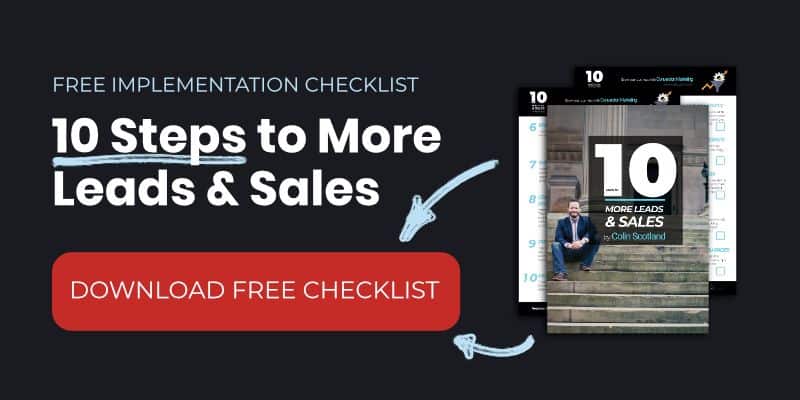How do we grow our business?
How do we decide the best way to grow and make more profit, to have a more significant impact?
This is precisely the question that I'm going to answer here.
Clients often ask, how do we go about growing? We've got this product, it's doing well, and we're up to $100k per year. We want to get to $1 million.
Or, we've got these stable of products that we're doing beautifully with, we're turning over $2 million, we want to get to $5 million. How do we do that?
I want to get to $30k per year, or $50k, or $100k year.
How do we do that? So there is a very simple and straightforward approach, a framework that I want to share with you right now.
The framework is called Ansoff's Matrix, and it gives us a way of thinking.
The Ansoff Matrix provides a scaffold for us to develop our business.

OK, let me explain… So the Ansoff Matrix has four quadrants. Existing and new products and existing and new markets.
If you look at the top left quadrant, selling existing products to existing markets: Say, for example, we are a coach, we have a course that helps e-commerce entrepreneurs to build their website online. That's our product. So market penetration is asking yourself the question, how can we do more of this? How can we go further, how can we go deeper? How can we encourage more sales of that same product? Here, we look to lead and traffic generation to get more sales.
You look at traffic strategies, ways of getting that product into the hands of more people. That's market penetration.
Bigger businesses look at market share. They look at what percentage of that market they own or control because they have the share of it.
In the micro-business and solopreneur world, market share means nothing. What is essential and what is still relevant, regardless of the size of the business, is the approach, the concept, the way of thinking.
How can we sell more of what we sell already?
The next part is to look at the people that you serve right now and ask the question, what else could we offer to help these clients?
How could we help existing clients to go further, faster, deeper with what we do?
In the example of e-commerce getting started with e-commerce, we may look at the scaling aspects of e-commerce, suppliers, and logistics of e-commerce, or helping clients with the technology of e-commerce.
These are all simple examples of how we expand out what we already do into new products.
What else could we create?
What else could we provide that serves clients that little bit further, helps them to go that little bit faster, and helps them to go that little bit deeper?
That's product development.
What else can you offer to the same people/market?
Once you've done that, you look to the bottom left quadrant, and you look to develop new markets. How might we take this fictional setting up an e-commerce website example to a new market?
So perhaps the e-commerce component isn't as important as developing and building the website. And we use e-commerce, which is based on WordPress. What if we create a product that shows people how to build WordPress websites; this could make sense since 80 percent of that content already exists inside the first product? Can you see that? Can you see how we are just extending out the product(s) so that it becomes appealing to new people?
It's straightforward just to put a different spin, a different angle on the core product and make it appealing to different markets.
So how can we develop our product into new markets in traditional business? Back in business school, I learned about how we would go from the domestic UK, to attack (metaphorically speaking) the European market, which would be the expansion and development of new markets quadrant.
On the micro-level, where I work, mostly, it's not about necessarily geographical region regions.
Think also about channels.
New channels of doing business, not necessarily just markets.
How could you get partners to promote your products?
How could you get ambassadors and people to sell your stuff?
Could you use affiliate programs?
How might you build an army of people that sell your product for you in different markets?
What could that look like?
And listen, there's no hard and fast answer in all of this. I'm just giving you some tips and advice to prompt those little grey cells, as Poirot would say.
To prompt those little grey cells to get them spinning and get them firing in the right direction.
So how could you do that? What could that look like for you?
The final option is diversification. We build new products and take them to new markets.
Now, if we were to look at a risk scale, the further you go into that bottom right-hand quadrant, the riskier it becomes. It's safer to sell more of what you've got and stay in the top left quadrant. It's moderately safer to develop new products for the same markets because we've got validation, we've got data. We know there's a demand for those products.
It's moderately riskier to develop products into new markets. The level of risk is increasing for each stage of this. And then when we go into diversification.
So, for example, Heinz, the baked beans company try to make clothing. That's a complete shift from what they do. That's entirely outside of their core competencies (potentially). So the level of risk is much, much higher.
What does that mean for you? Well, in terms of how you approach growing your business, you work in the order that we've covered them here.
How can we sell more of what we've got?
How can we bring that product to more people?
How can we encourage repeat business?
How can we encourage referrals, social shares, relationship building, advocates of our product?
What things can we do to encourage that?
Then you can look at developing new products for that same group of people: We've helped you with this, let us also help you with that.
Let us take you further. Let us take you faster. Let us take you deeper on that journey, that transformation that we deliver.
And then the third piece is the development of new markets.
We serve this group right now. What if we take this product and extend it to another geographical region or another pocket of people, another group, another segment of a different market?
And then, the final and most risky is total diversification—new products in new markets.
Some would argue that innovation lies at the edge of this matrix. Innovation is where you dare to challenge the status quo and do things differently. But it is a fine line because you run the risk of falling flat on your face. You run the risk of failure; the new products are a flop and a disaster.
Develop, build, grow the core, and then play in the ancillary areas with diversification.
These are the best methods, modes, ways of thinking, and approaches to grow in any business of any size, whether you are just starting or you're flying in seven or eight figures in your business right now.
Use the Ansoff Matrix, but more importantly, use the mode of thinking, how can we do more with what we've got? Getting the most out of everything that you've got is a beautiful book by Jay Abraham on that very topic.
So look at market penetration, then look to the development of markets and products. And finally, diversification.
There's no binary answer to this; it is an approach, a mode of thinking, a way of doing that will allow you to grow your business massively.




